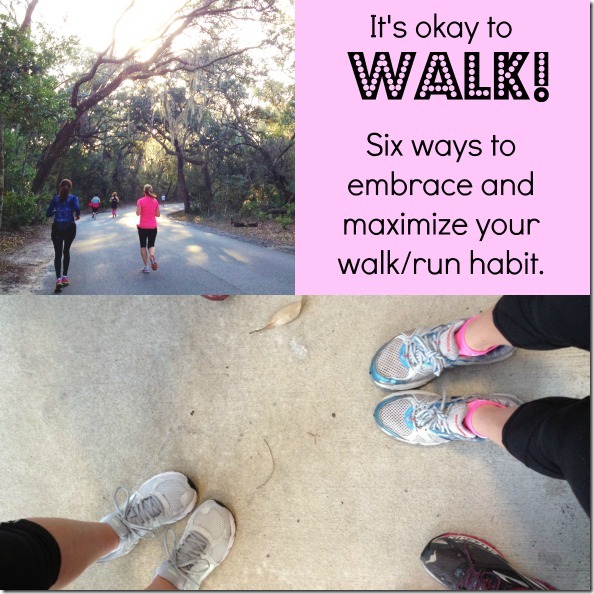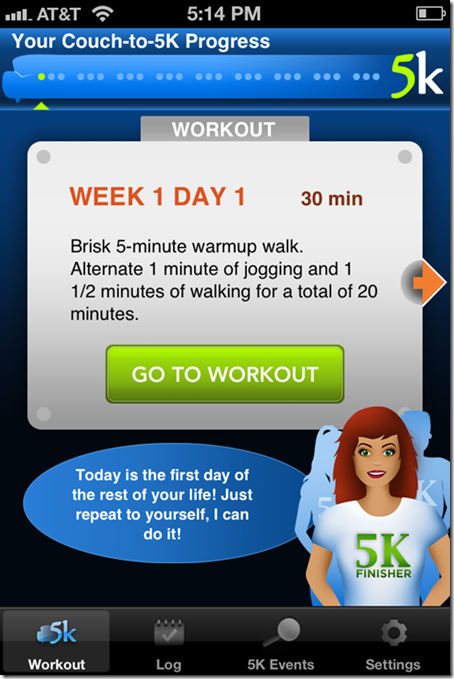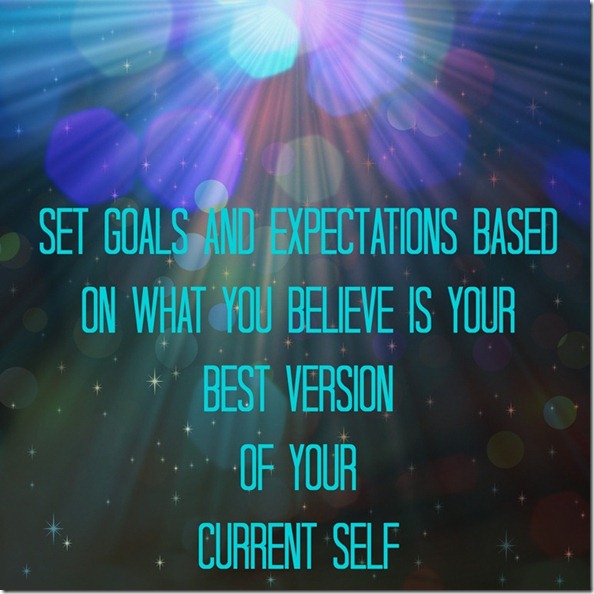I’ve been a fan of the walk/run method for a long time. For me, I find that it’s more enjoyable, maintainable, and fun than forcing myself to slog through mile after mile – and I hate the idea of emotionally beating myself up for daring to slow down. I have truly EMBRACED THE WALK.
It hurts my running heart to hear people say, “Oh, I feel so EMBARRASSED when I take walking breaks!†There is nothing embarrassing about taking a walking break – and I believe that you’re still a “runner†if you walk.
#1: Understand that walk/run intervals can actually make you faster overall. Walking breaks can make you faster, mile by mile. That’s because walking allows you to recover and inject energy into your run intervals. Your mile times may be faster overall WITH breaks than without! And this is true for a wide variety of paces, whether you’re gunning for a 12 minute per mile or a much faster time. Heck, my friend Janae just ran a 3:29:13 marathon AND qualified for the Boston Marathon AND she took multiple walking breaks during the race.
#2: Download a walk/run app. Walk/run is a really great way to increase distance, too. So if you’re stuck at 2 miles but would like to go further, try walk/running the 3rd mile. If you are the type of person who prefer some guidance during a workout, I suggest you download the Couch to 5K App <— here’s a complete review of the app. In general, I like the C25K program because it really reinforces the idea that there is nothing wrong with walking – part of being positive about walking during running is surrounding yourself with people who also love the method!
#3: Pick a point to run to – and don’t stop until you get there. While I used the C25K app to get back in shape after the birth of Henry, now I walk/run in a less structured way. What I would recommend is that you DON’T start walking simply because you’re struck by the urge to take a break. When I feel the need to walk, I pick a point a few hundred feet in front of me – like a lamp post or the end of the block – and I try to run to that point. If you always stop to walk the moment you feel tired, you won’t improve your endurance as quickly than if you motivate yourself to go a BIT further.
#4: Pick a point to stop walking and start running around – and start five feet before. Once you stop to walk, pick another point – the point you’ll start running again. When I approach the point, I try to start running again right before the point.
#5: Walk smart. Maximize your run intervals by walking smart. Don’t waste your walking breaks on the downhills. I like to walk up hills and when I’m in really sunny spots (so I can run the flats or downhills and in the shade). During races, I time my walks so I can walk through water stations.
#6: Don’t apologize for walking. And last, but not least, try to drop the “I’m not a runner if I walk†attitude! Like I said before, lots of really, really fast runners take walking breaks! A very wise blogger once said to me, “Don’t compare your behind-the-scenes film to someone else’s highlights rolls.†Everyone has ups and downs while running, and all that really matters is that you’re out there, trying your hardest and doing your best. A lot of this goes back to the issue of Compare, But Be Fair <— a nice reminder to be gentle with yourself.
Are you a fan of the walk/run? Or do you hate to take walking breaks? Clearly, I love my walking breaks, but I have some friends who refuse to take them, not because they think there is anything wrong with it, but because they say it makes their legs hurt so much to walk/run/walk/run! Glad I don’t have that problem. ![]()




People are embarrassed to take walking breaks? Obviously my runner friends are more like you. I’m more of a runner than a walker anyway, so I’m all about the breaks. Great list though!